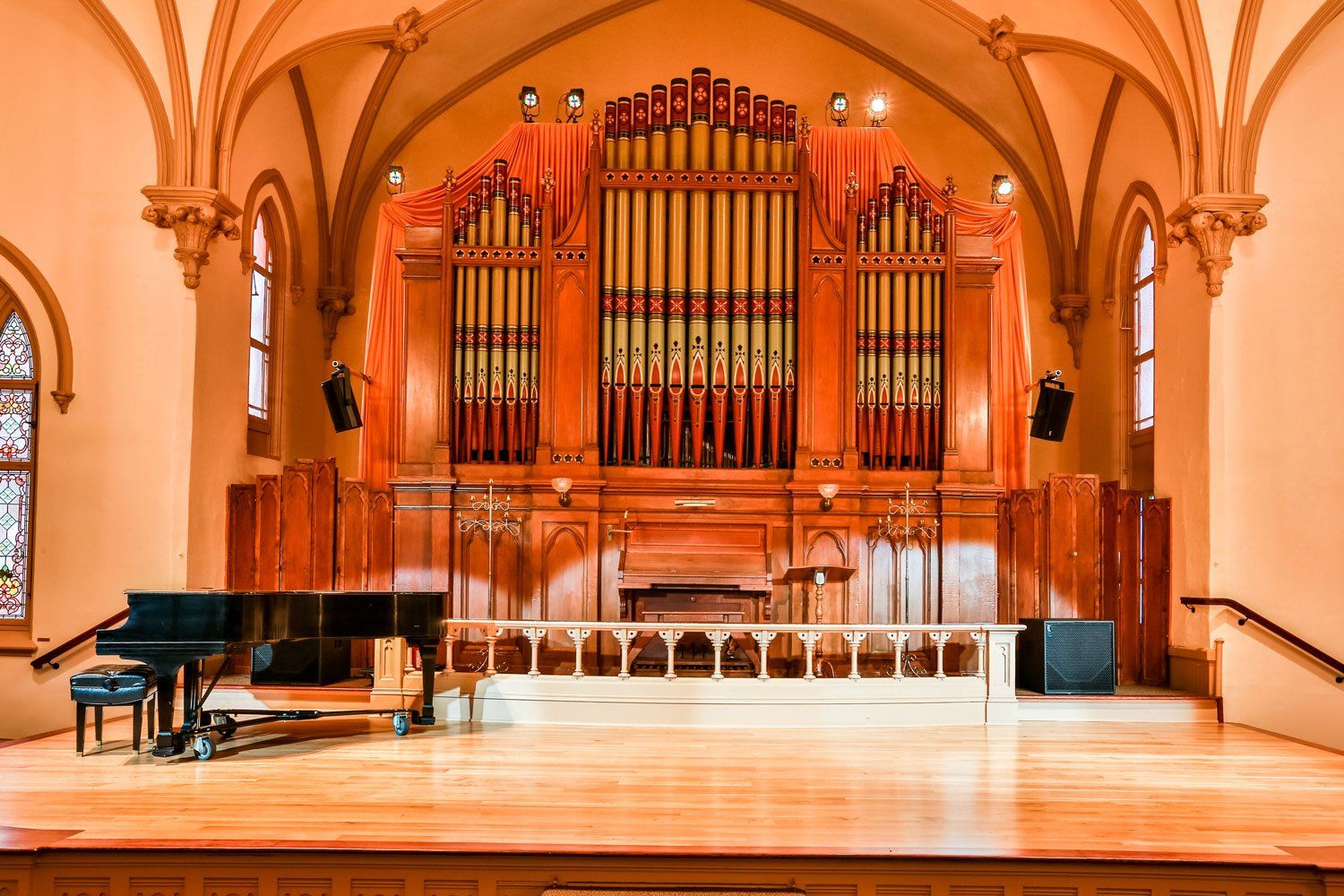ORGAN
TOC PORTLAND IS A NONPROFIT, NON-RELIGIOUS, ALL-AGES VENUE in Portland, Oregon
Built in 1882, it is on the National Register of Historic Places. Our mission is to produce and present programs that reflect and enhance the cultural life of the community while preserving and celebrating the building’s historic architecture.

One of TOC’s most notable features is a Hook and Hastings tracker action pipe organ, the first and now the only in Portland. A gift from the Ladd family, it arrived in Portland in 1883. The organ was used regularly in church services for many years. This tracker action organ uses mechanical connections and hand-pumping rather than electricity to produce a unique sound. It’s able to produce a broad range of tones, perfect for performing a wide array of music.
EVOLUTION of the PIPE ORGAN
By the middle of the 20th century the organ had lost some of its natural tonal beauty. Two key ranks of pipes – the trumpet and the oboe – were missing, and two others had been poorly altered, thus reducing the musical effectiveness and range. Cosmetic alterations to the case included several coats of paint and in 1920 an electric blower was installed. Many of the organ’s parts had deteriorated over the years, but fortunately there were no mechanical alterations. In 1968, when the church building was saved from demolition by a group of devoted citizens, the organ’s historical significance was discovered.
The TOC organ is the oldest tracker action organ in its original location. Even more important, the organ was never converted to electricity, a popular 20th century practice. The decision not to convert the organ, most likely prompted by lack of funds and interest, saved the very qualities that today are so valued and so rare. It has an authentic Victorian-era pipe organ sound and is valued for its intrinsic musicality and as a splendid vehicle for performing a wide range of music. It is also a treasured link to the past, helping us to better understand the art of organ-building.
RESTORATION
Since the formation of TOC careful records have been kept and efforts made to restore the organ. In 1976 the organ was cleaned and a few of its worst problems were corrected. The organ was fully restored in 1997, in time to be featured at the national convention of the Organ Historical Society, which was held in Portland that year. This international gathering of organ players, builders, and enthusiasts agreed unanimously that both the sound and appearance of the organ were beautifully restored. Restoration work was performed by Richard Bond, of Bond Organ Co., Portland. Ron Wagner, of R. Wagner Co., restored the stenciling on the pipes to their original ornate Victorian designs, which were discovered beneath layers of gold paint during the restoration process.
The restoration involved replacing perishable parts which were not replaced in 1976 and giving the organ a general mechanical adjustment. Missing parts were fabricated and replaced. Some tonal changes were reversed, restoring the original character of the sound. The oboe stop, mysteriously missing for many years, was replaced by an authentic set from a defunct Hook & Hastings organ in Nova Scotia.
With proper maintenance, the organ should function for decades before needing another restoration. If you would like to assist in the upkeep of the organ or the continued restoration and maintenance of this lovely historic site, please consider becoming a member of TOC. Your contribution is tax deductible. Thank you for your interest and support.
